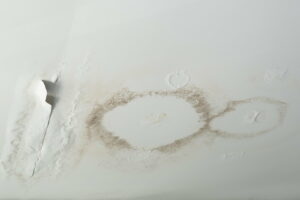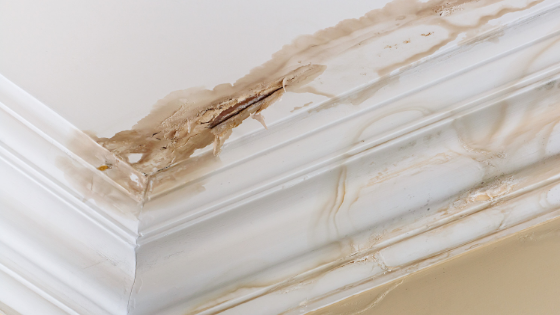Combat Water Stains On Walls - Expert Tips For Detection And Fixing
Combat Water Stains On Walls - Expert Tips For Detection And Fixing
Blog Article
We've found this post pertaining to Indicators of Water Damage Behind Walls listed below on the web and accepted it made sense to relate it with you in this article.

Water spots on walls are not pleasant to the eyes. Often it appears practically inevitable to experience water discolorations on walls in homes.
Homeowners staying in damp regions frequently take care of the concern of water spots on wall surfaces. However that doesn't need to hold true for you. With well-shaped as well as accurate details on the reasons for water stains and punctual fixing processes, you will certainly always be a step ahead of such occurrences. This post promises to be a handy guide for you.
3 Common Sources Of Water Spots on Walls
In contrast to popular belief, water discolorations on walls do not always originate from poor structure materials. There are several root causes of water stains on wall surfaces. These include:
Poor Water drainage
This will avoid water from permeating right into the wall surfaces. This web links to extreme moisture that you discover on the wall surfaces of your building.
So, the leading root cause of wet walls, in this instance, can be a poor drain system. It can also be because of poor administration of sewer pipes that run through the structure.
Damp
When hot damp air meets dry chilly air, it creates water droplets to form on the wall surfaces of structures. This occurs in bathroom and kitchens when there is vapor from cooking or showers. The water beads can tarnish the bordering walls in these parts of your residence and also infect other areas.
Damp or condensation affects the roofing system and walls of structures. This creates them to show up darker than other areas of the house. When the wall surface is wet, it develops an ideal environment for the growth of fungis and also germs. These might have adverse results on health, such as allergies and breathing conditions.
Pipeline Leaks
Most homes have a network of pipes within the wall surfaces. This makes certain that the pipelines are faraway from the reach of devastating rats. It constantly raises the stability of such pipelines, as there is little oxygen within the wall surfaces. This discourages corrosion.
Yet, a disadvantage to this is that water leakage influences the walls of the building and also causes prevalent damage. An indication of damaged pipes is the look of a water discolor on the wall surface.
Water Spots on Wall: Repair Service Tips
When dealing with water discolorations, property owners would usually want a fast fix. They would certainly quickly recognize this is disadvantageous as the water stains persist. Right here are a couple of useful ideas that will direct you in the fixing of water stains on walls:
Pro Idea
A houseplant in your home likewise raises its humidity. So, if your house is already moist, you may wish to present houseplants with very little transpiration. An example of ideal houseplants is succulents.
Conclusion
Although nobody wishes to have water discolorations on walls in their residence, it can take place to the best of us. This post provides you utilize, as you currently recognize exactly how to manage this incident if it does take place.
It is constantly best to hire specialist solutions to aid deal with the problems in your house.
Occasionally it appears virtually unpreventable to experience water discolorations on wall surfaces in residences.
In contrast to prominent idea, water spots on walls do not always stem from bad building materials. There are several causes of water discolorations on wall surfaces. The water beads can tarnish the bordering walls in these parts of your home and spread to other locations.
Below are a couple of practical ideas that will direct you in the repair of water stains on wall surfaces:
CHECKING FOR WATER DAMAGE
Water damage can be costly, and it may begin before you even notice the first signs of trouble. Water damage can cause mold and mildew in your walls and floors, which can create an abundance of health concerns for your family. It can also lead to costly repairs of various appliances and general home fixtures. To avoid the pricey consequences of water damage, here are Warner Service’s top 5 places you should check:
The walls – The easiest place to spot the beginnings of water damage is on the walls and ceilings of your home. If water damage is present, there will most likely be water stains, especially around the windows and doorframes, and/or cracks in the drywall. If a stain looks unusual (discolored to brown, black or gray, raised texture), has a swollen appearance or is soft to the touch, contact a professional immediately. The pipes – To avoid water damage, consistently check the pipes in your kitchen (especially the dishwasher and ice maker), bathrooms, laundry room (specifically washing machines) and basement for corrosion, leaks and water stains. Pay special attention to where the pipes connect in your home and the location of caulking around the bathroom fixtures, including toilets, sinks, showers and tubs. Missing or loose caulking and grout could be signs of leaking water. This seepage can also quickly cause mold and rust, so double check your water heater and tank for wet spots on the floor. The floor – Water damage is very easy to spot on the floor. Look for any warping or buckling of the material, especially in the basement. If your home has wood flooring, look for bright white or dark stains. If your home has carpeting, keep it dry and clean. A damp carpet that smells of mold could cause water damage and health problems. To avoid this, consider installing floor pans under your appliances to help prevent damages from small, slow and undetected leaks. The basement and attic – If your basement or attic smells odd check for mold and mildew around the area, especially the valley where the roof meets. While you are inspecting those areas, check for wall cracks, floor stains, rust and dampness in the insulation. If you live in a colder and/or rainier climate, perform routine checks for water damage from melting snow or ice and rain. The exterior – Check the roof for damaged flashing and missing, cracked or curled shingles. There should also be no standing water anywhere outside your home. This could be caused by puddles, leaky rain gutters or hoses, poor drainage, or short gutter spouts. Invest in a sump pump system or water flow monitoring system, and perform routine maintenance on these outdoor appliances to avoid indoor water damage.

We were made aware of that editorial on How to Find and Repair Water Leaking in the Wall from someone on another domain. Appreciated our write up? Please share it. Let other people check it out. Kudos for your time. Visit again soon.
Book 24/7
Report this page